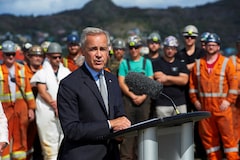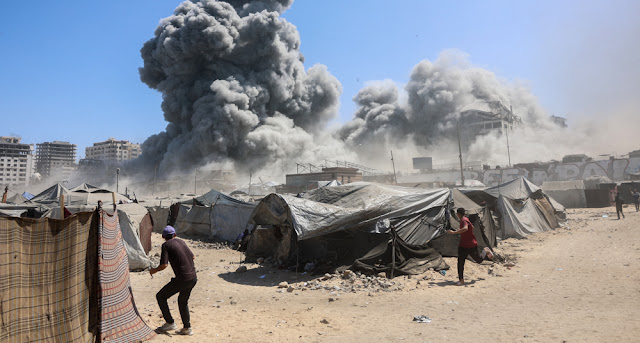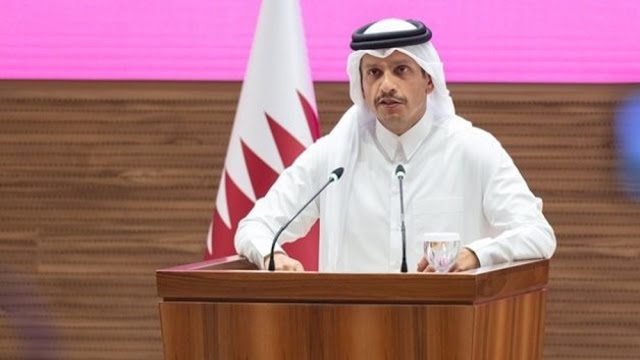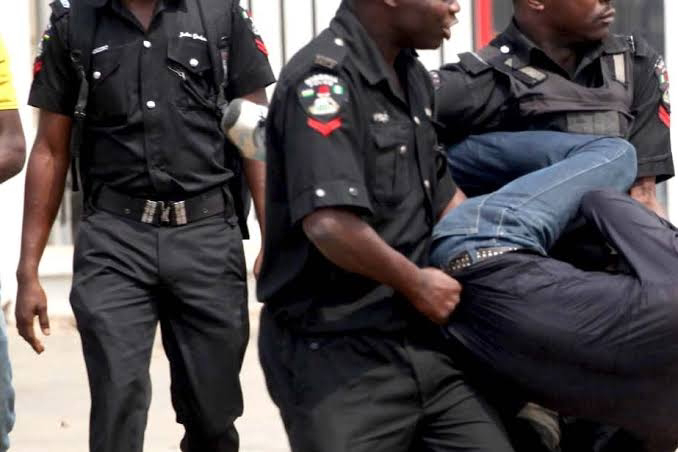On September 10, 2025, Canada issued a strong condemnation of a Russian drone incursion into its airspace, labeling the act as both reckless and escalatory. The incident, which involved a Russian military drone breaching Canadian territory, has raised significant concerns about regional security, NATO relations, and the broader implications of Russia’s actions in the Arctic. This event underscores the growing tensions between Western nations and Russia, particularly in the context of ongoing geopolitical rivalries and military posturing in strategically sensitive regions. Below is an in-depth exploration of the incident, its context, implications, and the responses from Canada and its allies, expanded to provide a comprehensive analysis of the situation.
The Incident: A Russian Drone in Canadian Airspace
The incursion occurred when a Russian military drone entered Canadian airspace, specifically over the Arctic region, which Canada claims as part of its sovereign territory. According to Canadian defense officials, the drone was detected by the North American Aerospace Defense Command (NORAD), a binational organization responsible for monitoring and defending the airspace of Canada and the United States. NORAD’s advanced radar systems and surveillance technologies identified the drone as it crossed into Canadian territory, prompting an immediate response from the Canadian Armed Forces.
While specific details about the drone’s model, altitude, and precise location remain classified, Canadian authorities confirmed that the unmanned aerial vehicle (UAV) was of Russian origin and appeared to be conducting reconnaissance. The drone did not engage in any hostile actions, such as deploying weapons, but its unauthorized presence in Canadian airspace was deemed a violation of sovereignty and a provocative act. The Canadian military scrambled fighter jets to intercept the drone, which subsequently left Canadian airspace without further incident. No shots were fired, and the situation was resolved peacefully, but the event has sparked a diplomatic and military firestorm.
Canada’s Response: A Strong Condemnation
In a statement released by the Canadian Department of National Defence, the government described the Russian drone incursion as “reckless and escalatory.” Defense Minister Bill Blair emphasized that Canada takes its sovereignty seriously, particularly in the Arctic, where the country has significant strategic and economic interests. “This unprovoked violation of our airspace is a clear message from Russia, and we will not tolerate such actions,” Blair said in a press conference. He added that Canada would work closely with its allies, including the United States and other NATO members, to address the incident and prevent future violations.
Prime Minister Justin Trudeau echoed these sentiments, calling the incursion a “dangerous precedent” that could undermine regional stability. Trudeau’s administration has faced increasing pressure to bolster Canada’s military presence in the Arctic, and this incident is likely to intensify calls for enhanced defense capabilities in the region. The Prime Minister also noted that Canada would raise the issue at international forums, including the United Nations and NATO, to ensure that Russia is held accountable for its actions.
The Canadian government has not yet specified what measures it will take in response to the incursion, but options could include diplomatic protests, economic sanctions, or increased military patrols in the Arctic. Canada has already lodged a formal complaint with the Russian embassy in Ottawa, demanding an explanation for the drone’s presence and assurances that such incidents will not be repeated.
The Arctic Context: A Geopolitical Flashpoint
The incursion must be understood within the broader context of the Arctic, a region that has become a focal point of geopolitical competition in recent years. The Arctic is rich in natural resources, including oil, gas, and minerals, and is home to critical shipping routes, such as the Northwest Passage, which are becoming increasingly accessible due to climate change and melting ice. As a result, countries with Arctic borders, including Canada, Russia, the United States, Norway, and Denmark, have intensified their efforts to assert control over the region.
Russia, in particular, has significantly expanded its military presence in the Arctic, building new bases, deploying advanced weaponry, and conducting frequent exercises near NATO countries’ borders. The Kremlin views the Arctic as a strategic priority, both for its economic potential and as a theater for projecting military power. Russian drones and aircraft have been increasingly active in the region, often approaching or testing the boundaries of NATO airspace.
Canada, as a key Arctic nation, has sought to strengthen its sovereignty over its northern territories, which include vast stretches of land, sea, and airspace. The Canadian Arctic Archipelago, which includes thousands of islands, is a critical component of the country’s territorial claims. However, Canada’s military presence in the region has historically been limited, with vast distances, harsh weather, and logistical challenges making it difficult to maintain a robust defense posture.
The Russian drone incursion highlights the vulnerabilities in Canada’s Arctic defenses and raises questions about the country’s ability to monitor and respond to threats in the region. It also underscores the growing importance of NORAD, which plays a critical role in detecting and responding to incursions in North American airspace. The incident has prompted renewed calls for Canada to invest in advanced surveillance systems, such as satellites and drones, as well as additional military infrastructure in the Arctic.
NATO and International Reactions
The Russian drone incursion has reverberated beyond Canada, drawing reactions from NATO allies and other international partners. The United States, Canada’s closest ally and NORAD partner, issued a statement condemning the incursion and reaffirming its commitment to defending North American airspace. “The United States stands shoulder to shoulder with Canada in condemning this reckless act by Russia,” said a spokesperson for the U.S. Department of Defense. The U.S. has also increased its own military activities in the Arctic, including joint exercises with Canada and other NATO allies.
NATO Secretary General Jens Stoltenberg described the incident as part of a broader pattern of Russian aggression, citing similar incursions in European airspace and increased military activity in the Arctic. “Russia’s actions are designed to test our resolve and challenge the rules-based international order,” Stoltenberg said. He called for a unified response from NATO members to deter further provocations.
Other Arctic nations, including Norway and Denmark, expressed concern about the incident and emphasized the need for increased cooperation to counter Russia’s growing assertiveness in the region. Norway, which shares a border with Russia, has reported similar incidents involving Russian aircraft and drones near its airspace in recent years. The Norwegian government called for a coordinated NATO response to address the growing threat.
Russia, for its part, has not officially acknowledged the incursion, but Kremlin spokesperson Dmitry Peskov downplayed the incident, describing it as a “routine operation” that posed no threat to Canada. Russian officials have previously justified their military activities in the Arctic as necessary to protect their national interests, particularly in response to NATO’s expansion in the region.
Historical Precedents and Escalatory Risks
The September 2025 drone incursion is not an isolated event but part of a series of Russian provocations in recent years. During the Cold War, Soviet aircraft frequently tested NATO airspace, leading to numerous intercepts by Western forces. Since the annexation of Crimea in 2014 and the subsequent deterioration of Russia-NATO relations, such incidents have become more frequent. Russian bombers, fighters, and reconnaissance aircraft have been intercepted near the airspace of NATO countries, including Canada, the United States, the United Kingdom, and Norway.
Drones, however, represent a new dimension of this challenge. Unmanned systems are cheaper, harder to detect, and can operate for extended periods, making them ideal for reconnaissance and testing defenses. The use of drones also reduces the risk to Russian personnel, as there are no pilots involved, potentially lowering the threshold for provocative actions.
The escalatory risks of such incidents are significant. While the Canadian interception of the Russian drone was resolved without violence, a miscalculation or misunderstanding could lead to a more serious confrontation. For example, if a drone were mistaken for a manned aircraft or perceived as carrying weapons, it could prompt a military response with far-reaching consequences. The Arctic’s remote and harsh environment further complicates the situation, as communication and response times can be delayed.
Moreover, the incident raises concerns about the potential for hybrid warfare tactics, where Russia could use drones, cyberattacks, or other unconventional means to challenge NATO’s cohesion and test its defenses. The ambiguity surrounding the drone’s intentions—whether it was conducting reconnaissance, testing Canada’s response, or simply malfunctioned—adds to the complexity of formulating an appropriate response.
Implications for Canada’s Arctic Strategy
The drone incursion has significant implications for Canada’s Arctic strategy, which has been a topic of debate in recent years. Canada has long sought to assert its sovereignty over the Arctic, particularly in response to competing claims from Russia and other nations. The Northwest Passage, a maritime route through Canada’s Arctic waters, is a particular point of contention, as Canada claims it as internal waters, while other countries, including the United States, view it as an international waterway.
To strengthen its position, Canada has taken steps to enhance its Arctic capabilities. In recent years, the government has invested in new icebreakers, patrol ships, and surveillance systems to monitor the region. The Canadian Armed Forces have also conducted regular exercises in the Arctic, often in collaboration with NATO allies. However, critics argue that Canada’s military presence in the region remains inadequate, given the vast distances and limited infrastructure.
The Russian drone incursion is likely to intensify calls for increased defense spending and a more robust Arctic strategy. Experts have suggested that Canada could invest in advanced radar systems, satellite surveillance, and unmanned aerial vehicles to enhance its ability to monitor and respond to threats. There is also a growing push for Canada to work more closely with its Arctic neighbors, including through NATO and bilateral agreements with the United States.
Broader Geopolitical Implications
The incident also has broader implications for global security and the evolving nature of warfare. The use of drones in military operations is becoming increasingly common, as they offer a low-cost, low-risk means of gathering intelligence and projecting power. Russia’s use of drones in the Arctic suggests that it is adapting its tactics to exploit technological advancements and challenge Western defenses.
For NATO, the incursion underscores the need for a unified approach to countering Russian aggression. The alliance has already taken steps to strengthen its presence in the Arctic, including through joint exercises and increased surveillance. However, the region’s unique challenges, such as its harsh climate and vast distances, require tailored strategies and investments.
The incident also highlights the importance of international norms and agreements governing airspace and military activities. Russia’s violation of Canadian airspace raises questions about the effectiveness of existing frameworks, such as the 1972 Agreement on the Prevention of Incidents On and Over the High Seas, which was designed to reduce the risk of confrontations between NATO and Soviet forces. Updating these agreements to account for new technologies, such as drones, may be necessary to prevent future incidents.
Conclusion
The Russian drone incursion into Canadian airspace on September 10, 2025, represents a significant escalation in the ongoing geopolitical rivalry between Russia and the West. Canada’s strong condemnation of the incident reflects its commitment to defending its sovereignty, particularly in the strategically vital Arctic region. The event has also highlighted the vulnerabilities in Canada’s Arctic defenses and the need for enhanced military capabilities and international cooperation.
As tensions continue to rise, the incident serves as a reminder of the complex challenges facing NATO and its allies in an era of hybrid warfare and technological advancements. While the immediate crisis was resolved without violence, the broader implications of Russia’s actions will likely shape Canada’s defense policies, NATO’s Arctic strategy, and the global security landscape for years to come. The international community will be closely watching how Canada and its allies respond to this provocation and whether Russia will heed calls to respect sovereignty and avoid further escalatory actions.







